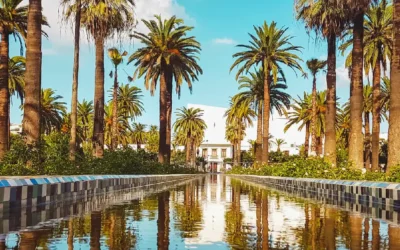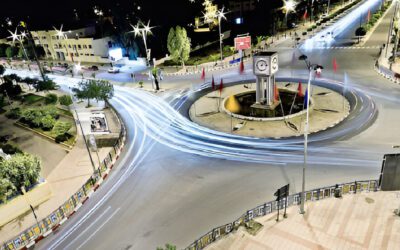Rabat The Imperial Capital City Of Morocco By The Atlantic
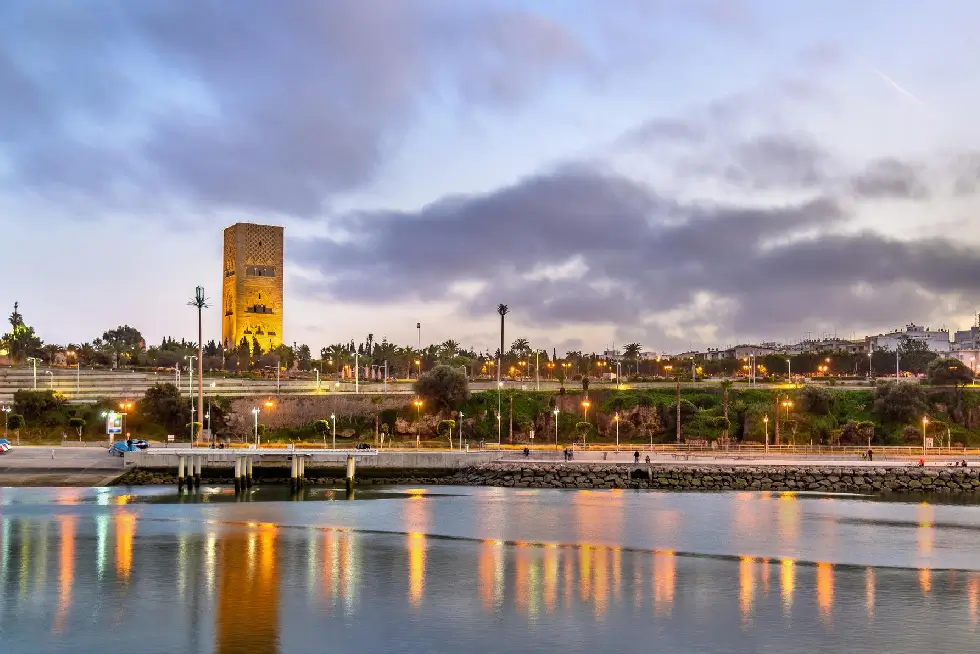
Table of Contents:
Introduction to Rabat City
Rabat, the administrative capital of Morocco since 1912, is one of the four Imperial cities, alongside Marrakech, Fes, and Meknes.
Situated in the Rabat-Salé-Kénitra region of Morocco and is distinctively positioned on the Atlantic coast at the mouth of the Wadi Bou Regreg, opposite the city of Salé.
Together, they form a significant urban center with over 1.8 million residents.
Located a short distance north of the major city and port of Casablanca, Rabat is about 86 km away, with well-established transit connections enabling a train journey of around 55 minutes between them.
The proximity of Salé and Casablanca, along with Rabat’s unique coastal location,
Attractions And Tourism In Rabat
Rabat, the heart of Morocco, is filled with historic wonders and stunning buildings that attract people from all over. Its top sights include the Hassan Tower, Mohammed V Mausoleum, and the Kasbah of the Udayas, each telling a unique story through their design and history.
1. Hassan Tower
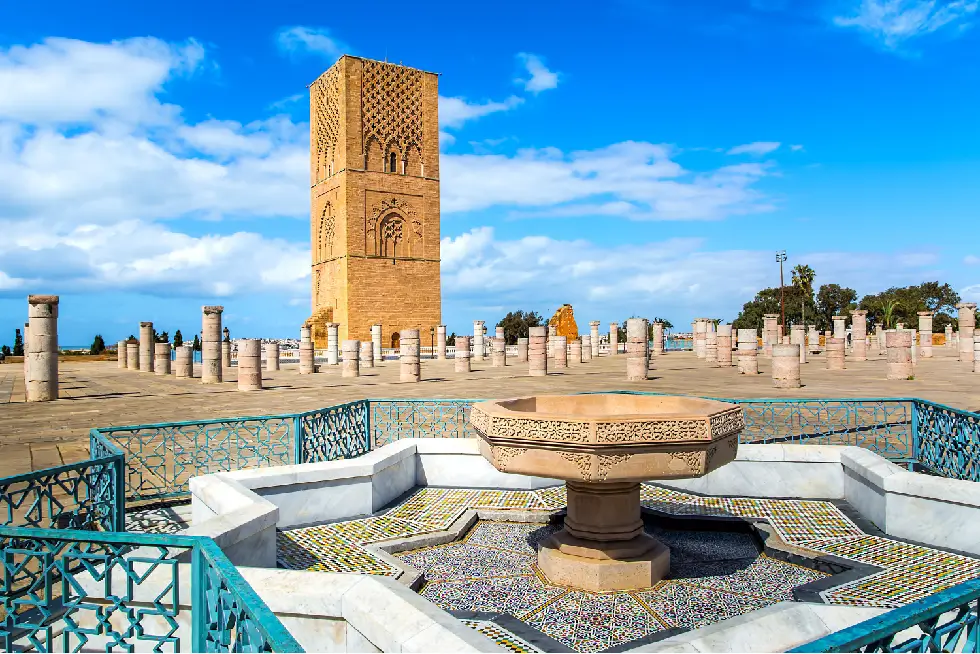
Overlooking the Bouregreg River, the Hassan Tower is a fine example of old Moorish and Islamic design. It’s a symbol of Morocco’s rich past and one of the most famous sights in Rabat. Built by the Almohads during Yacoub al-Mansour’s time, it was supposed to be part of a massive mosque, aiming to be among the world’s biggest. However, the plan wasn’t complete, leaving the Hassan Tower as a fascinating peek into history.
2. Mohammed V Mausoleum
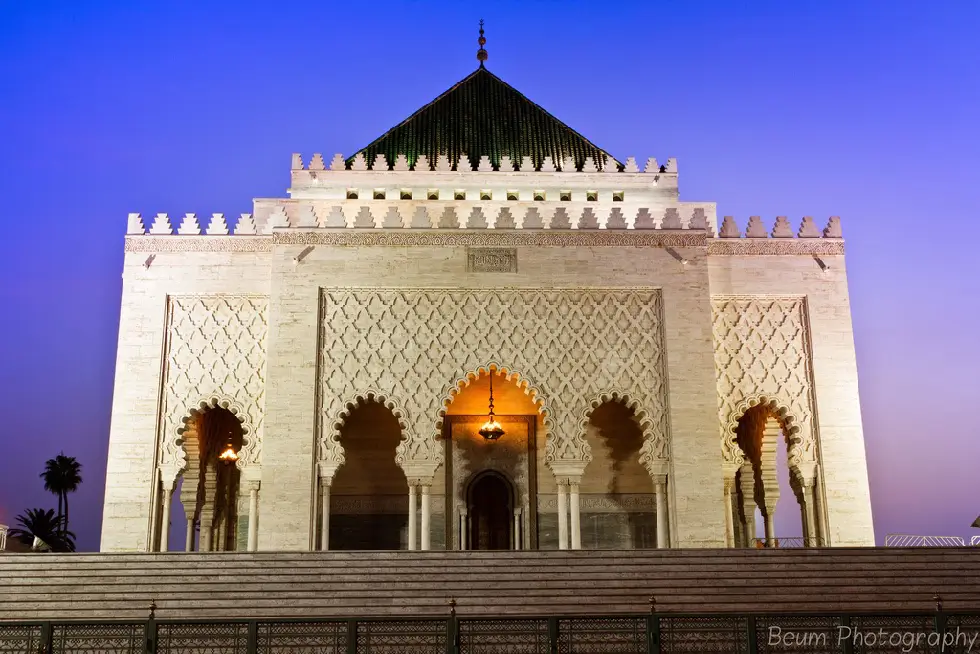
This marble resting spot honors the current king’s father and grandfather, showcasing amazing Moroccan artistry. It’s decorated with colorful patterned tiles, intricately carved plaster, and a stunning gold-leaf cedar ceiling, making it a peaceful and pretty homage to the royal family.
3. Kasbah of the Udayas
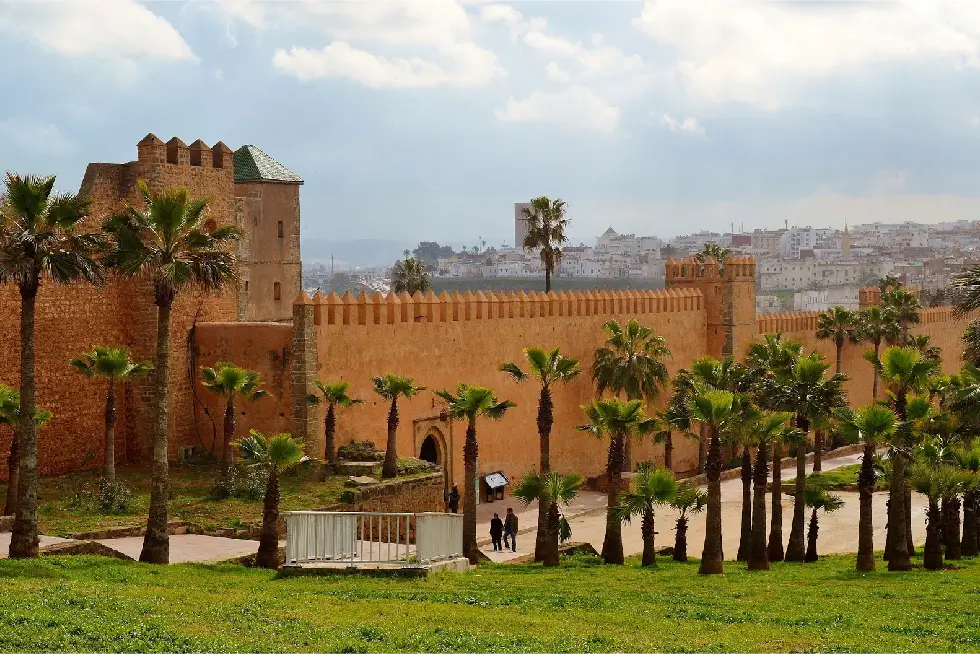
Listed as a UNESCO World Heritage Site, the Kasbah of the Udayas is a must-see in Rabat. This old fortress not only defines the city’s image but also takes you on a journey through Morocco’s rich history and culture. Visitors can explore Rabat’s old town and the lovely Andalusian Gardens within the Kasbah, learning about the city’s past.
4. Best Time to Visit
Spring (March to May) and fall (September to October) are the best times to explore Rabat’s historic sites, with temperatures around 17°C (63°F) to 25°C (77°F) making it pleasant to roam around. During these months, you can also enjoy traditional Moroccan tea while taking in the beauty of Rabat. The mild weather makes it easier for visitors to comfortably discover the city.
Urban And Architectural Landscape Of Rabat
Rabat, a city in Morocco, has done a great job blending modern design with its old, historic buildings. The city has smart plans in place to keep its history alive while making room for new developments. A big name in this effort is the Schéma Directeur d’Aménagement Urbain (SDAU) of Rabat-Salé, which helps keep the city’s natural and historic beauty intact while planning for the future.
One cool place in Rabat is the Kasbah des Oudayas, an old fortress from the 12th century. It used to be a military base, but now it’s a peaceful spot in the city with a beautiful garden, a museum of jewelry, and a cozy Moorish café. It’s a nice place to visit and soak in the city’s history.
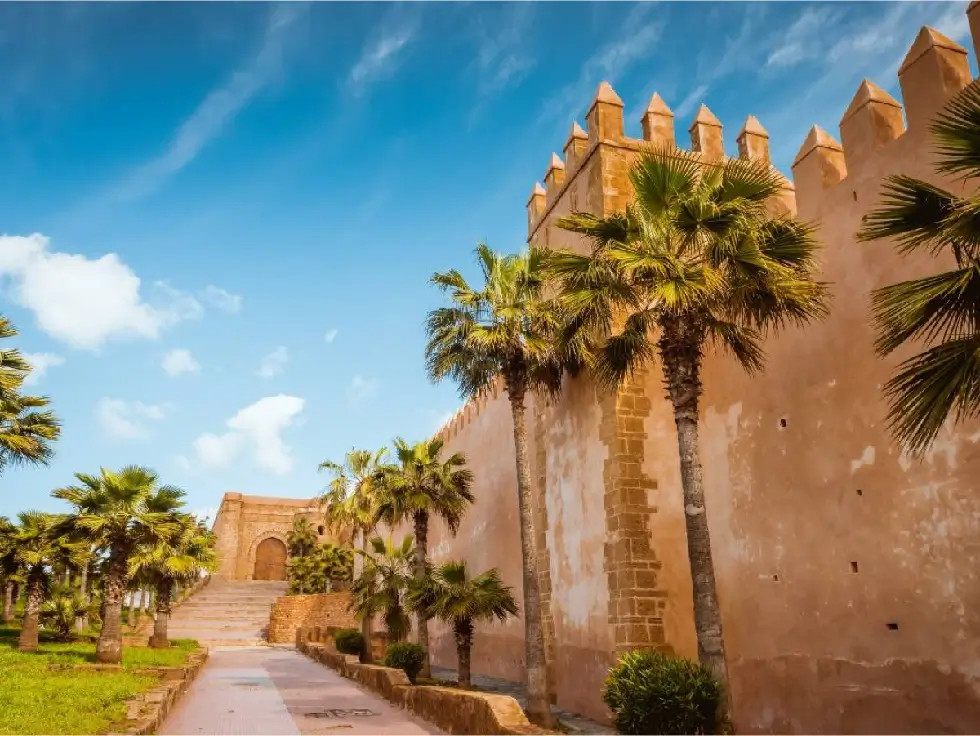
The city also has a growing scene for theater and art. There’s a big theater designed by a famous architect, Zaha Hadid, and it’s a place for all sorts of performances. There are also places like L’appartement 22 and Le Cube where modern artists can show their work and talk about it with others.

Every year, Rabat hosts a huge music festival called Mawazine, or “Rhythms of the World.” It’s a big party with famous musicians from all over, and it’s a way for Rabat to show its welcoming spirit to the world. The festival started small in 2001, but now it’s a big event that brings millions of people to the city to enjoy music and learn about Rabat’s culture.
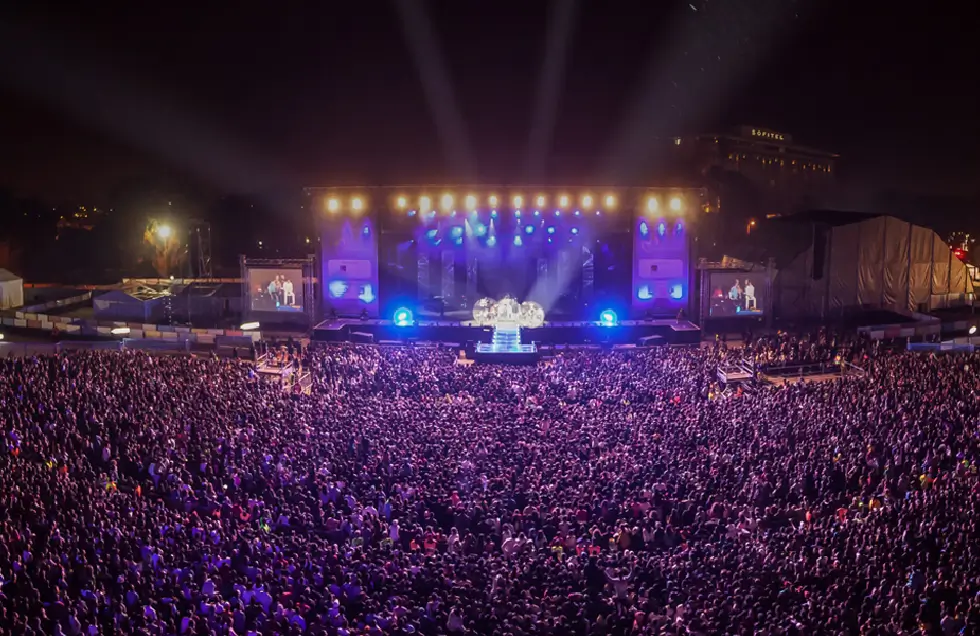
All of these things show how Rabat is a lively, welcoming city that values both its history and modern culture. It’s a place where residents and visitors can enjoy the old, the new, and everything in between.
Rabat The Governmental and Administrative Role
As Morocco’s capital, Rabat holds a crucial position in the nation’s governance and administrative affairs. It is the epicenter of the government, housing the majority of key administrative offices of the Moroccan government, along with numerous foreign embassies. Below are some notable aspects of Rabat’s governmental and administrative functions:
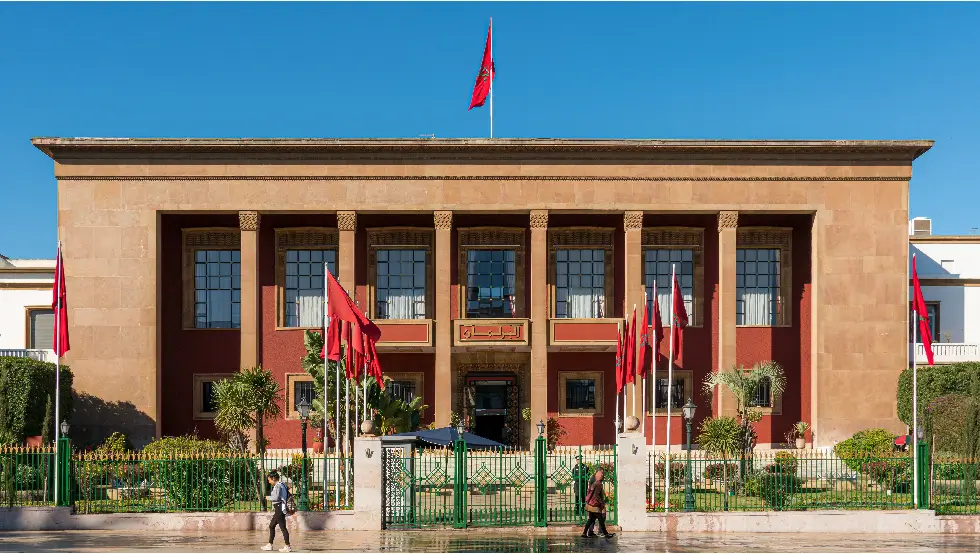
1. Governmental Heart:
- Rabat hosts crucial governmental gatherings, such as the Government Council meeting led by the Head of Government, as noted in an announcement on the official website of the Kingdom of Morocco’s government.
- The city boasts federal government edifices like the Palais de Justice on Avenue Mohammad V in Rabat Ville, a segment of the Moroccan Parliament encompassing the House of Representatives and the House of Advisors.
2. Administrative Nexus:
- The Ministry of Interior’s headquarters resides in Rabat, situated south of Rabat’s walled city, and east of the Dar al-Makhzen royal palace.
- The government website “Maroc.ma” lists several senior government officials, suggesting their offices and respective ministries might be situated in Rabat. Notable officials include the Minister Delegate to the Head of Government, the Minister of the Interior, the Minister of Foreign Affairs, African Cooperation and Moroccans Abroad, the Minister of Justice, and the Minister of Endowments and Islamic Affairs, among others.
3. Diplomatic Hub:
- Rabat accommodates all foreign embassies in Morocco, underscoring its stature as a diplomatic nucleus and marking it as one of the most influential cities in Morocco concerning international relations.
4. Administrative Entities:
- Numerous administrative organizations are hosted in Rabat as detailed on the government website “Maroc.ma“, including the High Authority of Audiovisual Communication (HACA), the Moroccan Phosphates Company (OCP), the National Agency for the Development of Renewable Energy and Energy Efficiency (ADEREE), Bank Al-Maghrib, and more.
5. Political and Administrative Epicenter:
- Rabat, characterized as Morocco’s substantial political and administrative core, harbors the royal palace, governmental authorities, and embassies, accentuating its pivotal role in the country’s administration and governance.
- Its position as Morocco’s governmental and administrative focal point, accommodating vital governmental bodies, administrative centers, and foreign embassies, underscores its vital role in shaping the nation’s political and administrative framework.
Rabat’s Historical Background
Rabat has a rich history that goes back to the 12th century. It was founded by a ruler named Abd al-Mumin, who built Rabat as a fortified place to house his soldiers for battles in Spain. However, later he shifted his focus to conquering areas in North Africa. The city’s fortifications were further enhanced by another ruler, Yaqub al-Mansur, who also started building a massive mosque, known today as Hassan Tower. But this project stopped when he died, leaving behind the ruins of the mosque that visitors can still see today.
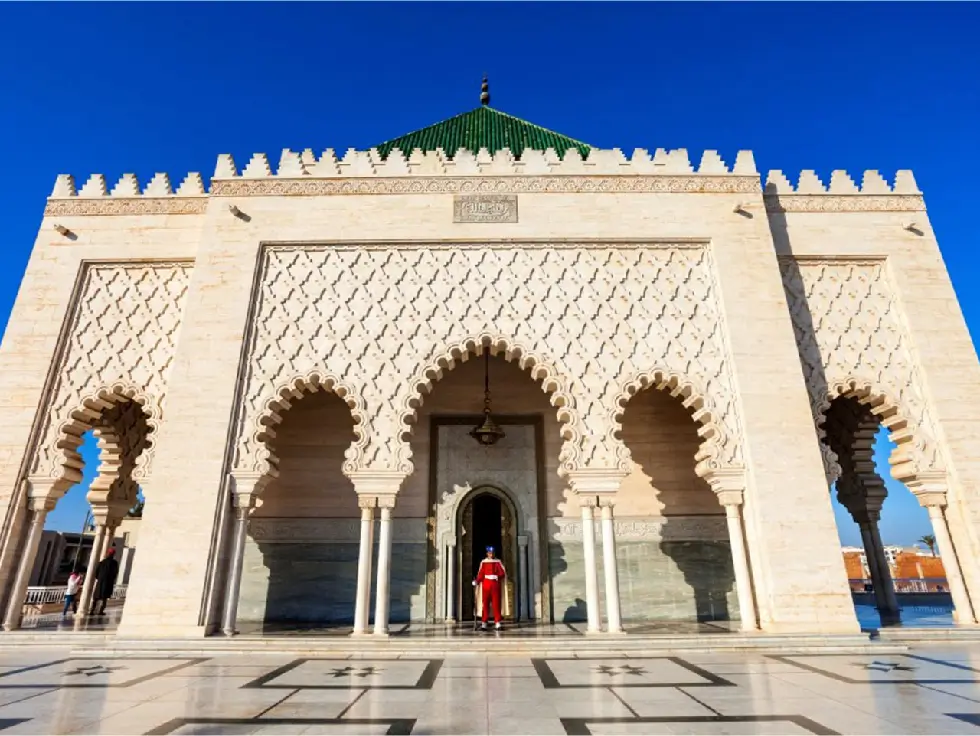
In the 13th century, Rabat faced tough times economically, and many people moved away. The city’s importance and wealth moved to another city called Medina Fez, leaving Rabat with only a few remaining residents. By the 17th century, the city became a shelter for pirates.
Things started to look up for Rabat in 1912 when French forces took control of Morocco and made Rabat the administrative center of the country. This move brought new life to the city. When Morocco became independent in 1955, Rabat continued to serve as the capital, growing into a place of government and culture.
Today, Rabat is not only a key place for trade and government but also a popular spot for tourists. Its location near the Atlantic Ocean, along with its rich history and cultural landmarks like the Hassan Tower and the King’s Palace, make Rabat an interesting place for visitors from around the world. Over time, the city has grown and evolved, overcoming its past challenges to become a vibrant and important part of Morocco.
Conclusion
Rabat, with its rich historical, cultural, and architectural offerings, provides a unique exploration ground that melds the ancient with the modern. Its captivating blend of eras not only enriches one’s understanding but also invites a deeper appreciation of a civilization that continues to evolve. The city’s allure encourages an immersive journey that extends beyond mere tourism, engaging individuals both emotionally and intellectually in a narrative that is as enduring as it is evolving.
FAQ
What are the nearby significant cities and how well-connected is Rabat?
Casablanca, a major city and port, is located about 86 km south of Rabat, with well-established transit connections, enabling a train journey of around 55 minutes between them.
What are the top attractions in Rabat?
Top sights include Hassan Tower, Mohammed V Mausoleum, and the Kasbah of the Udayas, each showcasing a unique aspect of Morocco’s rich history and architectural beauty.
What is the administrative significance of Rabat?
Rabat has been the administrative capital of Morocco since 1912, housing major governmental and administrative bodies, including the Moroccan Parliament and various ministries.
How is Rabat geographically positioned?
Rabat is located on the Atlantic coast at the mouth of the Wadi Bou Regreg, opposite to the city of Salé, forming a major urban center with over 1.8 million residents.
When is the best time to visit Rabat?
The best times to visit are during spring (March to May) and fall (September to October) with pleasant temperatures ranging between 17°C (63°F) to 25°C (77°F).
How does Rabat blend modernity with historical architecture?
Through plans like the Schéma Directeur d’Aménagement Urbain (SDAU) of Rabat-Salé, Rabat has preserved its historic buildings while making room for modern developments.
What are some notable places reflecting Rabat’s architectural heritage?
The Kasbah des Oudayas, an old fortress turned into a peaceful spot with a garden, museum, and a Moorish café reflects the city’s rich history.
What’s the scene of arts and culture in Rabat?
Rabat has a growing arts scene with venues like L’appartement 22 and Le Cube for modern artists. It also hosts the annual Mawazine music festival, showcasing its welcoming spirit and cultural vibrancy.
What key governmental bodies are housed in Rabat?
Rabat hosts key administrative offices, the Moroccan Parliament, and various ministries, making it a central hub for governmental and administrative affairs.
What is Rabat’s role in international relations?
Being home to all foreign embassies in Morocco, Rabat holds a significant position in the country’s international relations.
How has Rabat evolved through history?
Founded in the 12th century, Rabat’s importance fluctuated until 1912, when French forces made it the administrative center of Morocco. Post-independence in 1955, Rabat retained its capital status, evolving into a key place for government, trade, and tourism.
What unique experiences does Rabat offer to visitors?
Rabat melds the ancient with the modern, offering a rich historical, cultural, and architectural exploration ground, engaging visitors in a narrative that extends beyond mere tourism.


